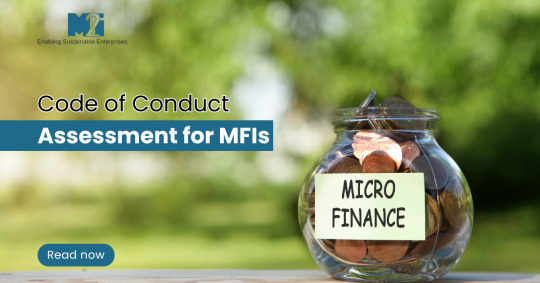#MFIs
Explore tagged Tumblr posts
Text
So viel Gutes - tu es!
Müßig zu erzählen, dass die Welt schlechter und schlechter wird – wir wissen es. Ebenso wissen wir, dass die netten Kalendersprüche, die zur massiven Weltverbesserung motivieren sollen, eben genau das sind: Nette Kalendersprüche. Aufgeben ist aber auch keine Lösung, was also kannst du tun? Drei wichtige Beispiele. Du musst die Welt nicht verändern, du wirst die Welt nicht verändern. Das liegt…
#dominic memmel#gutes tun#hoffnung#innere schönheit#liebe#liebesfähigkeit#mfis#resilienz#veränderung#wirkung#zusammenhalt
0 notes
Text
#Microfinance#NBFC#FinancialInclusion#BankingSoftware#LoanManagement#MicrofinanceSoftwareCompany#MicrofinanceSoftware#BankingEfficiency#FinancialSolutions#SoftwareForNBFC#CloudBanking#FinTechSolutions#DigitalTransformation#TechForFinance#InnovationInBanking#MFIs#NBFCGrowth#SmallBusinessLoans#FinancialTechnology#BusinessEfficiency
0 notes
Text


#IMFINE IM FINE IM FI NE IM FIN EI MFI N EI M FIN E#OUUUAAAAAAAAAAAAAAAAAAAHHHH#I still need to fix Mitch's textures-- his head nm is missaligned for some reason#gotta dress him up and then I'll work on Val :3c#fallout AU#modding yap
27 notes
·
View notes
Note
ultimate crossover, Jenny Schecter is alive and she's the unsub
JENNY SCHECTER
THUS SPOKE SARAH SCHUESTER???
9 notes
·
View notes
Text



1965 Saab MFi 13 Concept
My tumblr blogs:
www.tumblr.com/germancarssince1946 & www.tumblr.com/frenchcarssince1946 & www.tumblr.com/englishcarssince1946 & www.tumblr.com/italiancarssince1946 & www.tumblr.com/japanesecarssince1947 & www.tumblr.com/uscarssince1935 & www.tumblr.com/swedishcarssince1946
3 notes
·
View notes
Link
PayLogic Partners with FENACOBU to Launch a Digital Platform
0 notes
Text
Code of Conduct Assessment for MFIs: Why It’s a Game-Changer for Ethical Lending

Microfinance is all about giving people a fair shot—especially those who have been left out of traditional banking. But with great power comes great responsibility. That’s where the Code of Conduct Assessment for MFIs steps in. It’s not just a buzzword—it’s a serious process that holds Microfinance Institutions (MFIs) accountable to the people they serve.
Think of it like a report card that checks whether MFIs are playing fair, treating clients with dignity, and lending responsibly. Sounds simple? It’s a lot more than that.
What Is the Code of Conduct Assessment?
The Code of Conduct Assessment for MFIs is a thorough, independent review of how well an MFI sticks to ethical, client-focused practices. It looks into everything from how loans are offered to how repayments are collected, and whether the institution respects the rights of its borrowers.
In India, bodies like MFIN and Sa-Dhan help set the standards for what’s considered ethical microfinance. International guidelines, like those from the Smart Campaign, also influence how assessments are conducted.
Why It’s a Big Deal
Let’s be honest—microfinance can do a lot of good, but only when done right. Without checks in place, it can lead to things like:
Clients borrowing from multiple lenders and falling into debt traps
Unfair or hidden charges
Poor communication around terms and interest rates
Harassment during collections
Clients being unaware of how to file a complaint
That’s why the Code of Conduct Assessment for MFIs matters. It helps identify these issues early and creates a path for improvement.
What Does It Actually Look At?
During the assessment, a lot of things are put under the microscope. Some of the key areas include:
Transparency: Are clients told upfront about loan terms, charges, and their rights?
Fair Practices: Is the lending process respectful and non-exploitative?
Client Data Privacy: Is client information kept safe and used ethically?
Employee Behavior: Are field staff trained to interact with clients respectfully?
Complaint Mechanism: Can clients voice concerns, and are those concerns addressed seriously?
Prevention of Over-indebtedness: Are MFIs doing background checks to make sure clients aren’t overwhelmed with loans?
Who’s Behind the Assessment?
Usually, it’s done by third-party evaluators—agencies or consultants with expertise in microfinance and ethics. They talk to clients, review documents, visit branches, and then give the MFI a score or grade.
This score can influence funding decisions, memberships in industry networks, and how trustworthy the MFI looks to investors.
How Can MFIs Get Ready?
If you're running or working with an MFI, here’s what can help prepare for a successful Code of Conduct Assessment:
Align internal policies with industry codes
Train your staff regularly
Maintain clear, well-documented communication with clients
Keep the complaints system active and visible
Review lending processes for transparency and fairness
Quick FAQs
Is it mandatory? Not always, but many investors and industry bodies require it.
What if the MFI fails? It’s not the end of the world—recommendations are usually shared for fixing the gaps.
How often is it needed? Most do it every 1–2 years or before major funding rounds.
Do clients give feedback? Yes, and their feedback can significantly affect the outcome of the assessment.
Does it improve investor trust? Definitely. A good score signals that the MFI is serious about responsible finance.
Final Thoughts
In the world of microfinance, doing good isn't just about giving loans—it’s about how you give them. The Code of Conduct Assessment for MFIs helps institutions stay grounded in ethics and keep their clients' best interests front and center.
Whether you're a practitioner, policymaker, or just curious about how microfinance works behind the scenes, understanding this assessment process gives a clearer picture of what responsible lending should look like.
0 notes
Text
Equip your podiatry practice with essential equipment from MFI Medical. Explore our selection of blood pressure monitors, defibrillators, electrosurgery units, and more. Find top-quality podiatry tools to enhance patient care and ensure successful treatment outcomes.
0 notes
Text
Scham, Hemmung, Motivation
Wenn wir behaupten, dass starke negative Emotionen ebenso starke Reaktionen auslösen können, dann bleibt die Angst als relevante Emotion nicht lange alleine. Ähnlich intensiv und unangenehm ist die Scham. Dass selbst Tiere ein ausgeprägtes Schamgefühl besitzen – analog zur Angst – sollte verdeutlichen, dass wir um eine solch grundlegende Emotion kaum herum kommen. Wir alle haben schon von…
#dominic memmel#emotion#innere schönheit#klimadebatte#klimakrise#klimawandel#Kommunikation#mfis#motivation#scham
0 notes
Text
How to Trade Using the Money Flow Index (MFI): Strategies and Examples
Introduction to the Money Flow Index (MFI) The Money Flow Index (MFI) is a momentum oscillator that measures the inflow and outflow of money into a security over a specified period. It is similar to the Relative Strength Index (RSI) but incorporates volume, making it a more comprehensive indicator for assessing buying and selling pressure. The MFI ranges from 0 to 100, with levels above 80…
#Best MFI trading strategies#How to read the MFI indicator#How to trade using MFI#learn technical analysis#MFI and Moving Averages#MFI breakout strategy#MFI day trading strategies#MFI divergence trading#MFI forex trading strategy#MFI indicator trading strategies#MFI swing trading strategy#MFI trend reversal signals#Money Flow Index calculation#Money Flow Index for crypto trading#Money Flow Index trading strategy#Money Flow Index vs RSI#Overbought and oversold MFI levels#stock trading#Stock trading with Money Flow Index#successful trading#technical analysis#Technical analysis with MFI#Trading signals using MFI#Trading Strategies#Volume-based trading indicators
0 notes
Text
Advantages of investing through an AMFI registered mutual fund distributor in Chennai?

Professional experts help you educate and allocate funds according to your financial goals. Fairmoves, an AMFI registered mutual fund distributor in Chennai, offers complete investment solutions and support. They assist you with your risk tolerance, investment products and market trends
For More Information visit : https://www.fairmoves.in/
#MFI registered mutual fund distributor in Chennai#mutual fund distributor in Chennai#mutual fund sip investment in Chennai#registered investment advisory in Chennai#systematic investment planner in Chennai#financial consultant in Chennai#stock market advisor in Chennai#certified financial advisor in Chennai#best mutual fund distributor in chennai
0 notes
Note
boop
Unpopular opinion: I think the routine they provide in prison could fix me
boop boop
the routine in the psych ward would really help you, too...

2 notes
·
View notes
Text
Money Flow Index (MFI): Ghid Complet pentru Evaluarea Fluxului de Bani și a Condițiilor de Piață
Money Flow Index (MFI): Ghid Complet pentru Evaluarea Fluxului de Bani și a Condițiilor de Piață Introducere În analiza tehnică, evaluarea fluxului de bani și a presiunii de cumpărare sau vânzare este esențială pentru a înțelege sentimentul pieței și a identifica oportunitățile de tranzacționare. Money Flow Index (MFI) este un indicator puternic care combină prețurile și volumul tranzacționat…
#analiza tehnica#indicator tehnic#supracumpărare#supravânzare#presiune cumpărare#flux de bani#Money Flow Index#MFI#volum tranzacționare
0 notes
Link
PayLogic Partners with FENACOBU to Launch a Digital Platform
0 notes
Text
The Role of Code of Conduct Assessment for MFIs in Strengthening Ethical Finance

As the microfinance sector expands its reach across underserved communities, maintaining ethical standards becomes increasingly important. This is where the Code of Conduct Assessment for MFIs comes into focus, helping institutions align their operations with responsible lending principles and protect client interests.
Understanding the Code of Conduct Assessment
A Code of Conduct Assessment (CoCA) is an independent evaluation process that examines whether Microfinance Institutions (MFIs) are adhering to established ethical, client-protection, and transparency standards. It’s a tool designed to evaluate how well MFIs meet industry benchmarks and implement fair lending practices.
Key components include:
Ethical loan disbursal and recovery practices
Clear and honest communication with clients
Protection of client data and confidentiality
Efficient grievance redressal systems
Organizational governance and staff accountability
Why MFIs Should Prioritize CoCA
1. Meeting Regulatory Standards
With regulatory frameworks evolving, especially under the oversight of bodies like RBI and MFIN, it’s imperative for MFIs to comply with conduct codes. A strong CoCA performance demonstrates adherence to such norms and builds institutional credibility.
2. Attracting Funding and Partnerships
A positive Code of Conduct Assessment for MFIs enhances investor confidence, signaling that the MFI maintains transparency and responsible practices. This is crucial for attracting financial partners and expanding services.
3. Upholding Client Trust
Ethical behavior fosters trust and loyalty among borrowers. When clients feel respected and informed, retention improves and word-of-mouth referrals increase.
4. Operational Improvements
The assessment process highlights internal inefficiencies, enabling MFIs to fine-tune operations and reduce risk.
Focus Areas of the Assessment
Governance and Ethics
Loan Procedures
Client Education
Privacy and Data Use
Complaint Management
Preparing for a Code of Conduct Assessment
To excel in a CoCA, MFIs should:
Regularly audit policies and procedures
Provide ethics training to staff
Maintain thorough documentation
Monitor client interactions for quality assurance
Conclusion
A strong Code of Conduct Assessment for MFIs is a mark of institutional integrity and dedication to responsible finance. In today’s competitive and regulation-driven environment, prioritizing this evaluation is not just good practice—it’s essential for long-term success and sustainability.
1 note
·
View note
